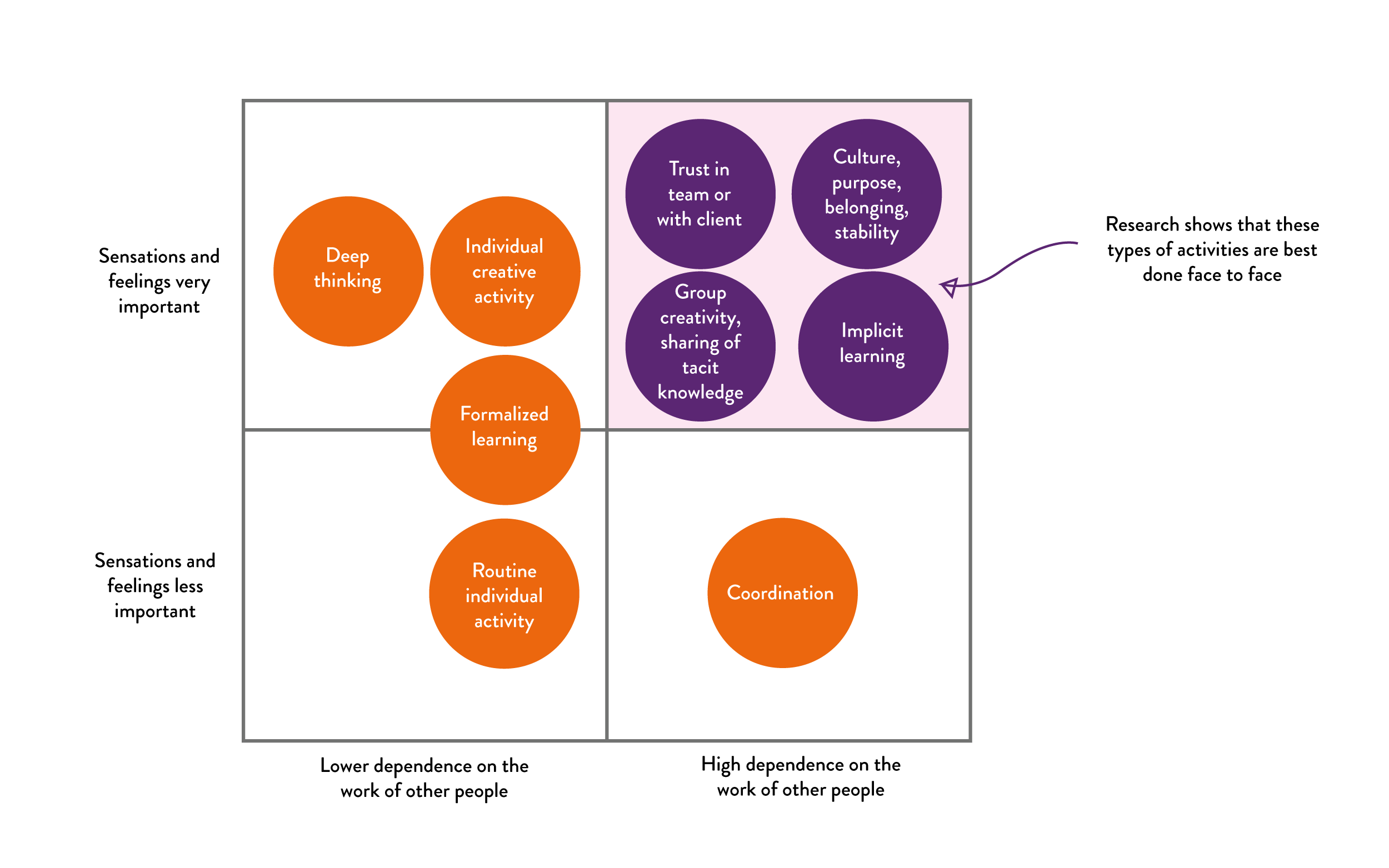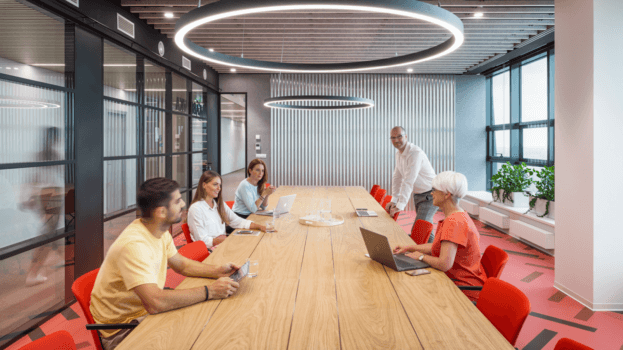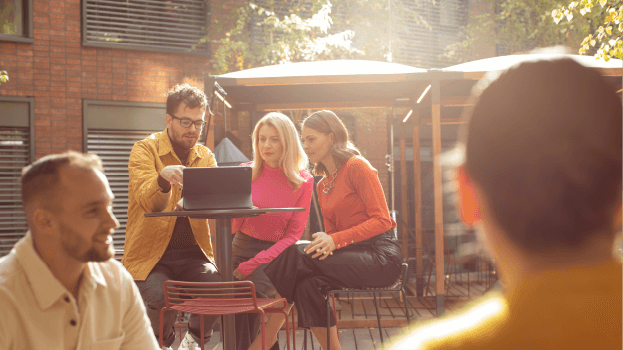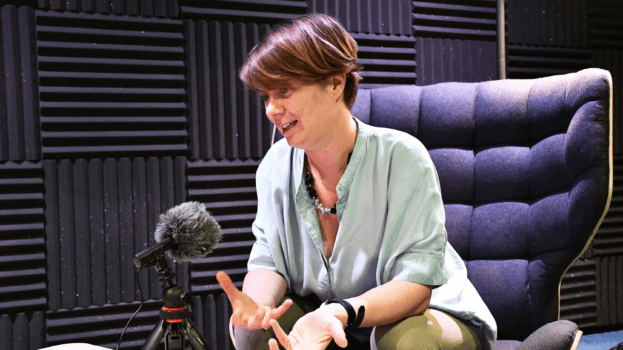- When should I work from home?
- When should I work from the office?
- Where is the best place for me to work?
Well, the answer to these questions depends on the activities you perform. Our office fit-out professionals and Iva Kleinova, the former Head of Research at HB Reavis, came up with a work activities matrix that can help you to find answers to these questions and in turn improve the employee experience.
But won’t my productivity suffer if I don’t work from the office? Not really. The system behind the matrix is that our daily work consists of various activities. Some of them are highly dependent on other people’s work, some are not. For some tasks, we need a high level of people stimulation, but some of them do not require any stimulation at all. And therefore, based on the activity, you can choose a place to work without damaging your productivity.
Take a pen & paper (or an Excel sheet) and try it for yourself!
First, write down all the activities you perform during your working day. Is it meetings? Is it coding? Is it presentations in front of clients? Write them all down one under another. Take your time and do some creative and focused brainstorming!

Second, think about what level of people stimulation and people dependence you need for the activities you wrote down. Is it high or low?
And last but not least, figure out the division of the activities in the matrix and what it means. In the lower left corner, some tasks are not dependent on others and require less people stimulation (like writing emails and coding alone). Some tasks are dependent on others but do not require too much people stimulation – like coordinating processes. Moving up to the low dependence/high people stimulation quadrant, there might be tasks like writing an article or preparing a presentation. And finally, the quadrant for which in-office work really makes sense: the high people stimulation/high dependence on others. As you can imagine, these are all highly social activities.
“I’m not saying it’s not possible to organise group activities – to build trust, mentor someone, maintain a positive, productive culture or create innovations – remotely. It is possible. But it’s so much harder,” says Iva Kleinová.

Iva Kleinova, the former Head of Research
If you would like to learn more about best practices and examples, tune into our 3rd podcast!
At Origameo, we use our technical expertise and years of experience to design offices that fuel productivity, enhance company culture and help employers reach their goals. We redevelop offices as often as we design completely new workspaces. But in every case, we adapt everything to their people’s needs – and that usually means embracing hybrid working.
About the authors
Iva Kleinova is the former Head of Research at HB Reavis and the creator of the series content. Nick Oakley is an Asset Manager at HB Reavis UK and the moderator of this series. Jana Straková is the Product Marketing Manager at Origameo by HB Reavis, and Eva Vavrakova is Workspace Strategy Lead at Origameo. Both of them supported and supervised the whole podcast creation process. Christopher Svitok is an intern at HB Reavis, and Callum Fraser is an intern at HB Reavis UK. Both of them contributed to the production and post-production of this series.


